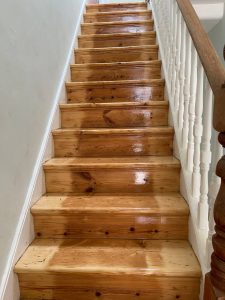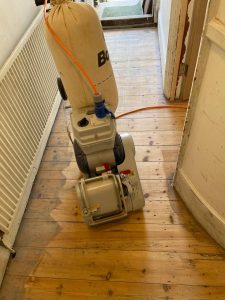Floor Sanding for Stairs: Techniques and Tips

Enhance the beauty and longevity of your wooden stairs with our expert guide.
Introduction
Wooden stairs can add a touch of elegance to any home, but over time, they may show signs of wear and tear. Floor sanding is an effective way to restore the natural beauty of your stairs. Here, we provide techniques and tips to achieve the best results for your stair renovation project in London.
Preparing for Sanding
Before you begin sanding, ensure your stairs are free of nails, staples, and debris. Clean the surface thoroughly to avoid damaging your sanding equipment and to ensure a smooth finish.
- Remove Old Finish: Use a paint stripper or chemical remover to get rid of any old finish or paint.
- Repair Damages: Fill any cracks or holes with wood filler and allow it to dry completely.
- Protect Surroundings: Cover nearby furniture and fixtures with plastic sheets to prevent dust from spreading.
Choosing the Right Sandpaper
Selecting the correct sandpaper grit is crucial for achieving a smooth and even surface. Start with a coarse grit (40-60) to remove the old finish and smooth out imperfections. Gradually move to finer grits (100-120) to polish the wood.
Sanding Techniques

Using the right sanding technique can make a significant difference in the final result. Here are some tips:
- Hand Sanding: For detailed areas and edges, hand sanding is the best approach. Use sanding blocks for even pressure and control.
- Orbital Sanders: These are ideal for larger, flat areas. Move the sander in the direction of the wood grain to avoid scratches.
- Consistent Pressure: Apply even pressure throughout the sanding process to achieve a uniform finish.
Finishing Touches
Once sanding is complete, it’s time to finish your stairs. Choose a high-quality wood stain or sealant to enhance the wood’s natural beauty and protect it from future damage.
- Staining: Apply wood stain evenly using a brush or cloth. Allow it to penetrate the wood, then wipe off any excess.
- Sealing: Use a clear sealant to protect the wood from moisture and wear. Apply multiple coats for best results.
Conclusion
With the right techniques and tips, floor sanding your stairs can be a rewarding DIY project. By following this guide, you can restore the elegance of your wooden stairs and ensure they remain a beautiful feature in your home for years to come.







How to Handle Floor Stains from Pets
How to Handle Floor Stains from Pets Pets bring joy and companionship to our homes,[Read more...]
How to Handle Mold and Mildew Before Sanding
How to Handle Mold and Mildew Before Sanding Before sanding your floors, it is[Read more...]
How to Choose the Right Sealant for Your Sanded Floors
How to Choose the Right Sealant for Your Sanded Floors Choosing the right sealant[Read more...]
Floor Sanding FAQs: Everything You Need to Know
Floor sanding is a popular method for rejuvenating wooden floors, but it often comes with[Read more...]
The Benefits of Floor Sanding for Open House Showings
London Property Tips Home About Contact The Benefits of Floor Sanding for Open House[Read more...]
The Costly Mistake of Improper Lead Paint Removal
The Costly Mistake of Improper Lead Paint Removal If your home was built[Read more...]
Cost Guide: How Much Does Floor Sanding in London Cost?
If you’re looking to rejuvenate your wooden floors and enhance the beauty of your home,[Read more...]
Floor sanding and renovation and installation services in Richmond
Richmond: A Jewel of London’s Green Boroughs Richmond is one of London’s most desirable and[Read more...]
The Lifespan of Sanded Floors: What to Expect
Sanded floors can significantly enhance the beauty and value of your home, especially in a[Read more...]
Innovations in Floor Sanding Technology
The field of floor sanding has seen significant advancements in recent years, making the process[Read more...]